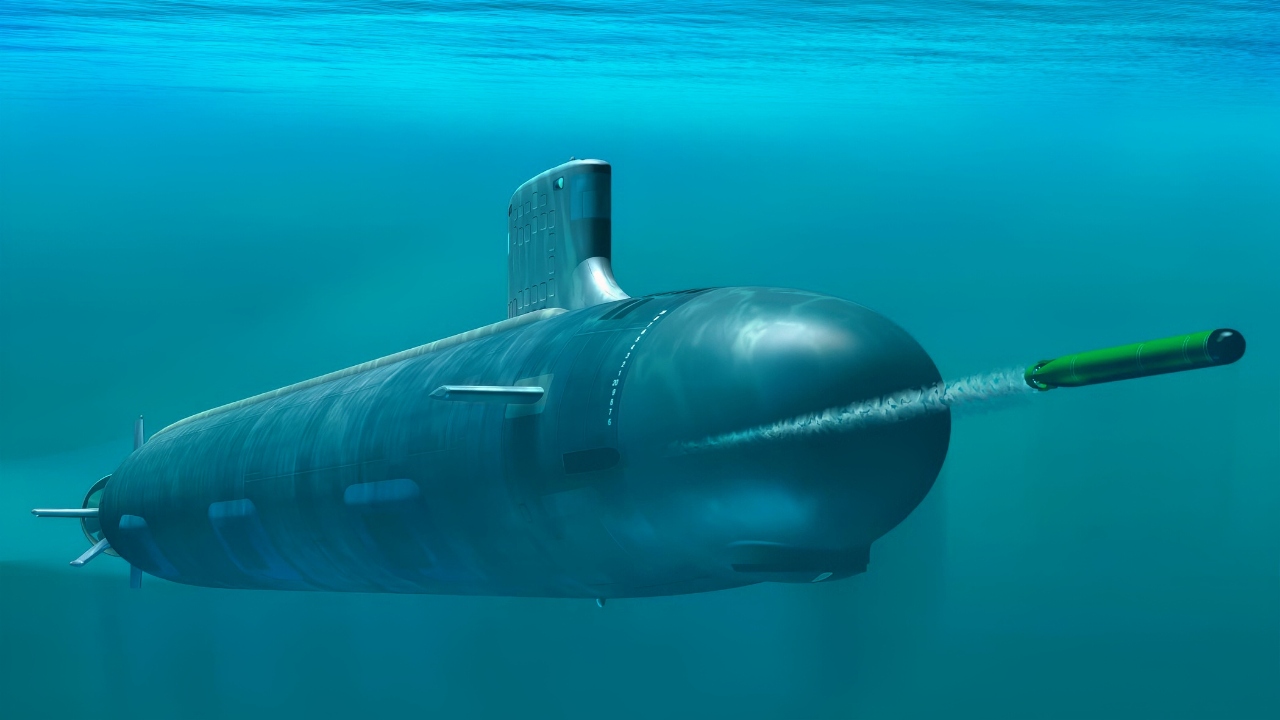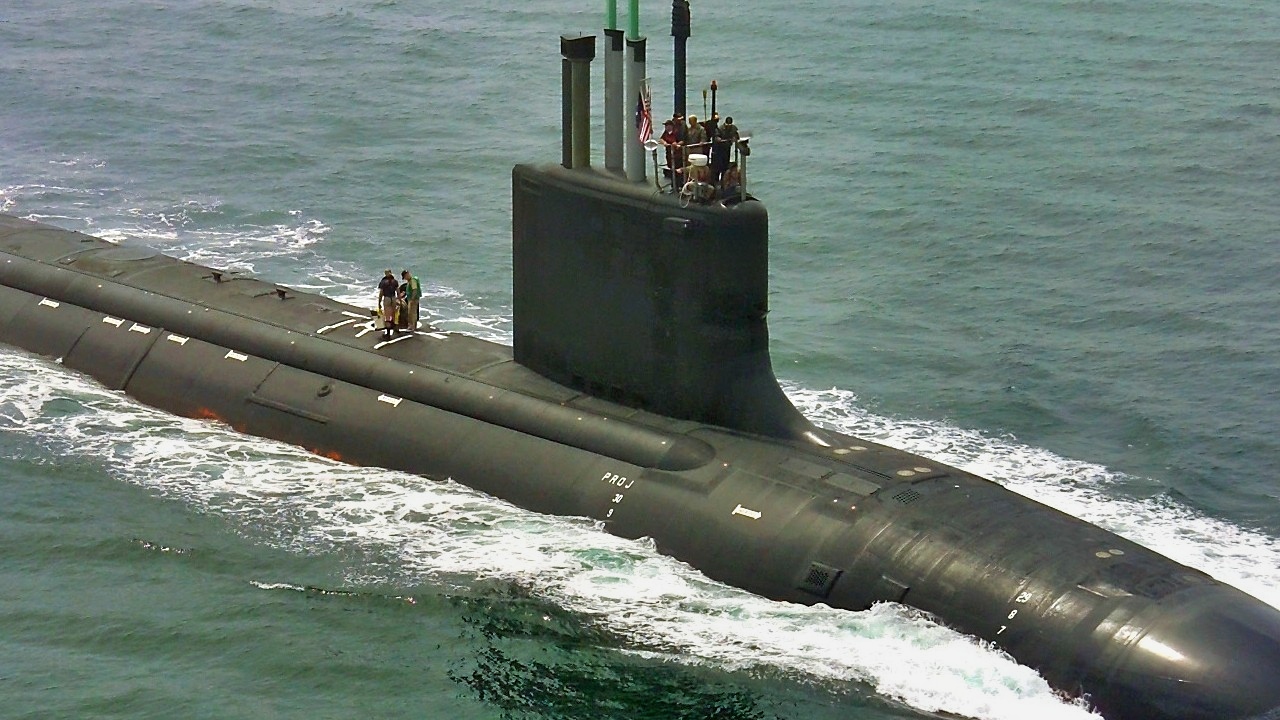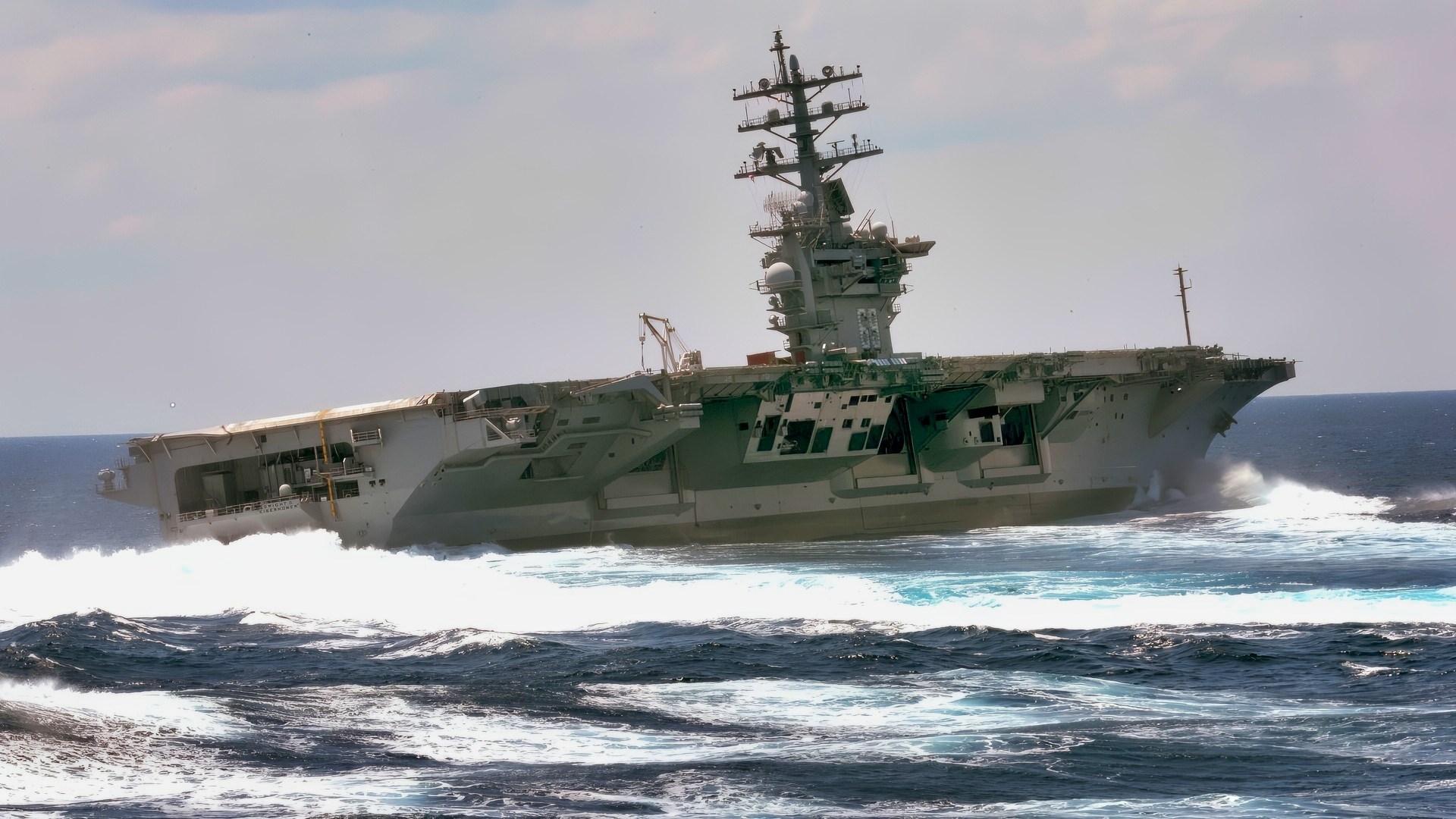Key Points and Summary: The U.S. Navy’s Mark 48 is the quiet constant behind American sea power: a heavyweight torpedo that hunts submarines and kills surface ships with equal confidence.
-Born in the Cold War, it keeps getting better through modular upgrades—most notably the Mod 7 CBASS seeker co-developed with Australia, which improves performance in cluttered coastal waters and resists modern decoys.
-A digital brain, wire guidance, and a powerful, quiet propulsion system give submariners a steerable, thinking weapon with a decisive warhead. Recent contracts sustain production and upgrades, ensuring the fleet’s magazines stay full.
-Carriers deter; missiles signal. The Mark 48 finishes.
-In fact, the Navy’s best weapon might come down to one word: Torpedoes.
The Mark 48 Torpedo (MK-48): The U.S. Navy’s Best Weapon of War? You Decide
If you ask a submarine sailor what really scares ships, you won’t hear much about flashy hypersonic missiles or viral drone boats.
In fact, when I was presenting at a conference at Yale University nine years ago, I got an earful from a U.S. Navy captain who thought I needed a dressing-down.
He said, “[A]ll that talk about carrier-killer missiles. Sometimes you need to talk about the most basic of weapons: why about torpedo threats? U.S. Navy torpedoes are the best and I can tell you China won’t like them in a fight. It might be our best weapon.”
Fair enough. For the U.S. Navy, the heavyweight torpedo that has quietly underwritten sea control for half a century is the Mark 48. It doesn’t have a public affairs team. It doesn’t get carrier-style flyovers. But it has something better—an unbroken record of getting smarter, stealthier, and deadlier with age.
This is the story of why the Navy built it, what it costs in money and effort, the lessons carved out of years of testing and upgrades, and why the future still belongs to this “old” weapon that refuses to get old.
Why the Navy Built It
By the late 1960s, the United States faced a simple but brutal problem under the sea.
The Soviet Union was fielding faster, deeper-diving submarines, including boats designed to outrun or out-climb earlier American torpedoes. The Navy needed one weapon that could do both jobs—hunt quiet submarines and also kill big surface ships. Earlier torpedoes came in flavors—some small and agile for anti-submarine work, others heavy and hard-hitting for anti-ship shots. That split wasn’t sustainable against an opponent deploying better hull coatings, smarter countermeasures, and more rugged boats.
The answer was the Mark 48: a heavyweight, dual-purpose torpedo that a U.S. submarine could launch against anything worth sinking. From day one it fused three ideas that still define it today:
Reach and speed enough to catch modern submarines and outmaneuver ships trying to dodge;
Brains in the nose to hunt by sound, sort real targets from noisemakers, and adapt mid-run;
A big, reliable punch to break a warship’s back or shatter a pressure hull.
When the “Advanced Capability” (ADCAP) version arrived in the 1980s, it accelerated everything—smarter processing, quieter propulsion, better immunity to tricks. Instead of regularly inventing new torpedoes from scratch, the Navy committed to iterating the one it had. That decision has paid dividends ever since.
Meet the Mark 48 or Mk-48 Torpedo
A Mark 48 is a 21-inch-diameter, 19-foot-long underwater hunter with three sections that matter to anyone who isn’t an engineer: eyes and ears up front, a brain and body in the middle, and muscle in the back.

SSN 774 Virginia Class Submarine Artist Rendering from U.S. Navy.
Eyes and ears (the seeker). Up front sits a sophisticated acoustic system—think of it as a sonar “camera” and microphone array—that can both listen (passive) and ping (active). The newest seeker, a broadband design co-developed with Australia, can transmit and process across a wide range of frequencies. That’s like upgrading from a narrow flashlight to a variable-beam spotlight: it helps search wider, pick out real targets faster, and shrug off decoys that try to lure the torpedo away.
Brain and body (guidance and control). Inside is a digital guidance computer that fuses what the seeker hears with what the launching submarine tells it over a thin guidance wire. (Picture a barely visible tether spooled out behind the torpedo that lets the submarine update the shot mid-run.) With better processors and software, the Navy can tune how the torpedo behaves—when to be patient, when to go aggressive, how to react if a ship throws a noisemaker or turns hard.
Muscle (propulsion and warhead). A compact piston engine burning Otto Fuel II drives a shrouded propulsor, pushing the weapon at high speed for long distances, quietly enough to make life hard on defenders. At the business end is a large high-explosive warhead that doesn’t need a direct hit. Detonating under a ship’s keel can snap it like a twig; a close detonation beside a submarine can crush its hull with pressure.
Some technical details are classified, as they should be. But the big idea is simple: find, discriminate, and hit with authority, all while giving the launching submarine options through wire guidance until it’s time for the torpedo to hunt on its own.
“Old” Is a Feature, Not a Bug
Weapons age in two ways. Some calcify—locked to the electronics and tactics of their birth year. Others molt. The Mark 48 is a molter.
The torpedo’s architecture—separate sections for the seeker, the guidance package, the propulsion, and the warhead—let the Navy keep swapping in better parts without rebuilding the whole thing. That’s why you’ll hear alphabet soup like Mod 6 and Mod 7 (CBASS—Common Broadband Advanced Sonar System). Each “mod” is a step up in how well the seeker hears, how wisely the brain reacts, and how quietly and reliably the engine pushes. Software updates—tested to the point of obsession—add new tactics the same way your phone’s operating system unlocks features your original hardware never imagined.

Groton, Conn. (July 30, 2004) – The nation’s newest and most advanced nuclear-powered attack submarine and the lead ship of its class, PCU Virginia (SSN 774) returns to the General Dynamics Electric Boat shipyard following the successful completion of its first voyage in open seas called “alpha” sea trials. Virginia is the Navy’s only major combatant ready to join the fleet that was designed with the post-Cold War security environment in mind and embodies the war fighting and operational capabilities required to dominate the littorals while maintaining undersea dominance in the open ocean. Virginia and the rest of the ships of its class are designed specifically to incorporate emergent technologies that will provide new capabilities to meet new threats. Virginia will be delivered to the U.S. Navy this fall. U.S. Navy photo by General Dynamics Electric Boat (RELEASED)
The result is a paradox: a weapon first fielded during the Cold War that remains most dangerous today because it continually absorbs new tricks.
Cost: What the Money Actually Buys
If you try to Google “unit price,” you’ll find a mess of numbers. That’s because the Navy rarely buys torpedoes like you buy toasters. It buys new all-up rounds, upgrade kits, guidance sections, spares, and recertifications—often in the same contract. A guidance-and-control kit costs one number, a full torpedo with a new body and warhead costs another, and the price floats with production tempo.
What’s clear from public contracts is the scale and the intent. The Navy has put hundreds of millions of dollars in recent years into new guidance sections, spares, and complete rounds to restart and sustain the production line, with Australia buying in alongside the U.S. That money doesn’t just buy hardware. It buys industrial muscles—skilled people, test equipment, and supply chains—that make sure the fleet can maintain, upgrade, and replace torpedoes at wartime tempo if it ever has to. In an era when we talk a lot about munitions shortages, that industrial piece is a strategic asset.
Lessons Learned (and Earned)
1) Broadband is a game-changer. The shift to a broadband seeker is the single biggest leap in the torpedo’s modern life. In cluttered, shallow water—a coastal fjord, a busy strait—traditional narrowband pings can get confused by echoes and background noise. Broadband sonars use a spread of frequencies and smarter processing to build a cleaner picture, making it harder to spoof and easier to lock on real targets.
2) Modularity beats reinvention. By designing upgrades as modules, the Navy didn’t have to wait for a moonshot program to get better performance. It could roll improvements into the fleet steadily—new brains this year, propulsion quieting next year—without grounding everything.
3) Joint development is leverage. Australia has been a full partner in the seeker upgrade and broader support program—funding, testing, and fielding alongside the U.S. For a weapon this specialized, a second sophisticated user means more shots in exercises, more data, and more money to keep lines warm.

Norfolk, VA. (May 7, 2008)-The Virginia-class submarine USS North Carolina (SSN 777) pulls into Naval Station Norfolk’s Pier 3 following a brief underway period. North Carolina was commissioned in Wilmington, N.C. on May 3, 2008. (U.S. Navy Photo By Mass Communications Specialist 3rd Class Kelvin Edwards) (RELEASED)
4) Littoral warfare demands humility. Torpedoes were once “deep ocean” tools. Today they also have to work in messy coastal water full of ships, rocks, fishing traffic, and temperature layers that bend sound in weird ways. The Mark 48’s answer has been better processing and smarter software behaviors, not wishful thinking that the ocean will be clean and quiet.
5) Wire guidance is still gold. In a world drunk on autonomy, the humble guidance wire remains a lifesaver. It lets the submarine nudge the weapon if the target maneuvers or decoys, or abort if something changes. When seconds matter and the picture is complicated, keeping a human in the loop until the last sensible moment is worth a lot.
Where It Fits in Today’s Fight
Imagine the problem China’s navy poses in the Western Pacific: long-range sensors and missiles, dense air defenses near shore, and carrier groups that want to keep U.S. ships at a distance. In that world, the quietest approach remains under the surface. A Virginia-class submarine (and, later, its successor) can stalk sea lanes, lie in wait off a choke point, or trail a task group from just outside the defender’s best sensors. When the moment comes, a salvo of Mark 48s doesn’t announce itself with flashy contrails. It simply arrives—fast, quiet, and hard.
That undersea punch pairs with long-range anti-ship missiles from aircraft and surface ships. But missiles are finite and sometimes visible to faraway radars long before they arrive. Torpedoes are infinite-threat—if you don’t know where the submarines are, you never get to relax. A smart navy makes the enemy worry about both.
The Future: More Brains, Quieter Muscles, Tighter Teams
No one will publish a roadmap for a weapon designed to surprise. But the open hints add up:
Smarter software, faster updates. The guidance package is already digital; expect more frequent “tactics drops” that refine how the torpedo reacts to new decoys and strange acoustic scenes—especially in crowded littorals.
Propulsion refinement. A hot-gas piston engine and a shrouded propulsor have served the weapon well; incremental changes keep reducing noise and improving reliability. The Navy has also explored quieter “swim-out” launches (less noise in the first seconds after leaving the tube), the kind of detail that matters when you want to shoot without advertising.
Better teaming with the shooter. As submarines field new sonars, masts, and fire-control computers—and as they share more data with patrol planes and surface ships—the torpedo benefits. A clean, confident firing solution is the best upgrade of all.
Allied commonality. Australia’s continued buy-in signals that the CBASS baseline and follow-on “spiral” improvements will stay healthy. That keeps production warm and integration on track for both navies—including, in Australia’s case, future nuclear-powered submarines.
If you’re waiting for a “Mark 49,” you may be waiting forever. The smarter bet is a Mark 48 that keeps shedding its skin—same shape, new soul—as threats evolve.
Why This “Simple” Weapon Endures
A torpedo is humble in the best way. No warship captain ever slept soundly because the adversary had fashionable missiles. But they all respect a heavyweight torpedo. It doesn’t bluff. It doesn’t tweet. It closes, thinks, corrects, and breaks steel.
That’s why the Mark 48 remains the most honest form of sea control we have. Aircraft carriers and submarines get the headlines, and rightly so—they’re the platforms that project power and deliver presence. But when the United States needs a quiet, final answer at sea, the conversation ends where it began: torpedo.
About the Author: Harry J. Kazianis
Harry J. Kazianis (@Grecianformula) is Editor-In-Chief and President of National Security Journal. He was the former Senior Director of National Security Affairs at the Center for the National Interest (CFTNI), a foreign policy think tank founded by Richard Nixon based in Washington, DC. Harry has over a decade of experience in think tanks and national security publishing. His ideas have been published in the NY Times, The Washington Post, The Wall Street Journal, CNN, and many other outlets worldwide. He has held positions at CSIS, the Heritage Foundation, the University of Nottingham, and several other institutions related to national security research and studies. He is the former Executive Editor of the National Interest and the Diplomat. He holds a Master’s degree focusing on international affairs from Harvard University.
More Military
The F-35 Has a Range Problem That Can’t Be Fixed
The F-14D Tomcat Still Haunts the U.S. Navy
The B-1B Lancer Bomber Almost Never Flew
Battleship USS Nevada Has a Message for the U.S. Navy
Forget Aircraft Carriers: ‘Light Aircraft Carriers’ Armed with Drones Might Be the Future










